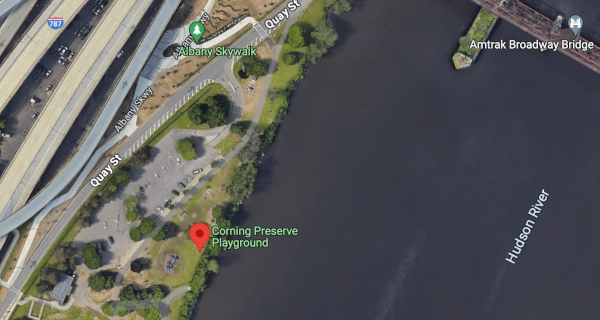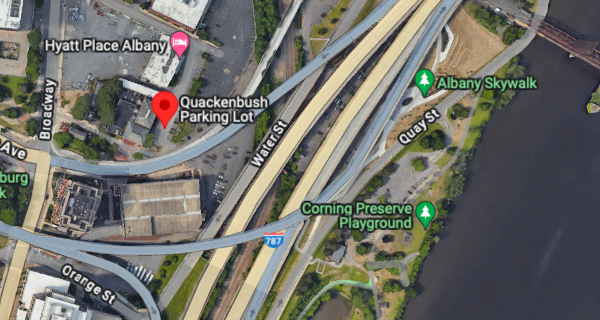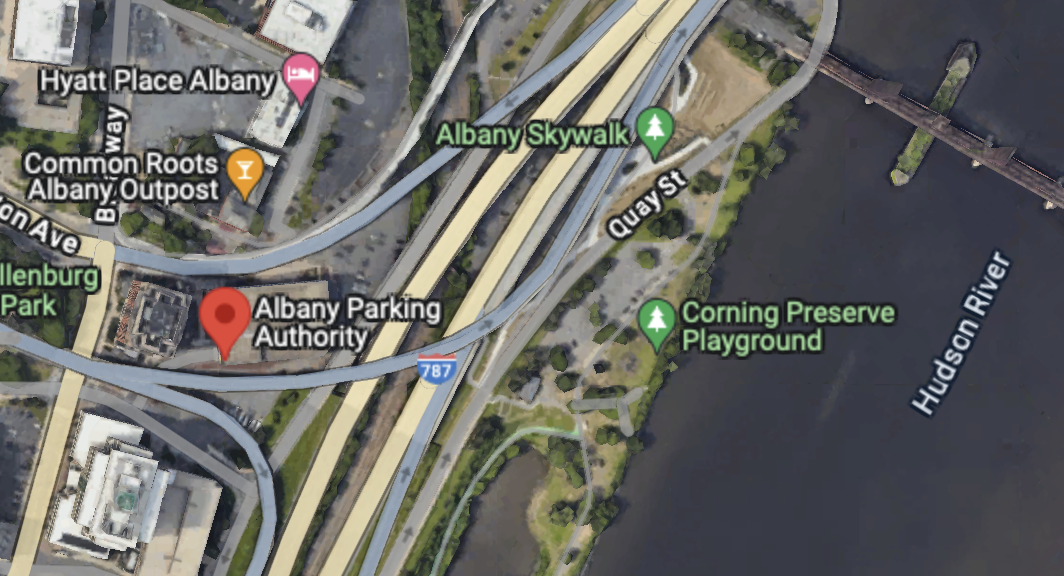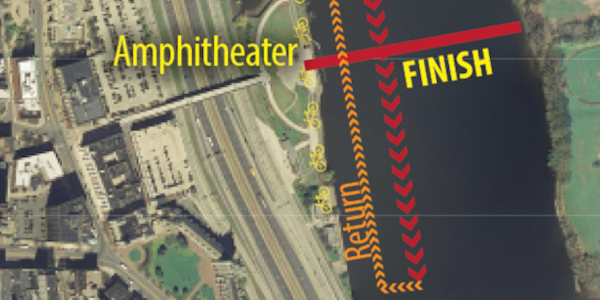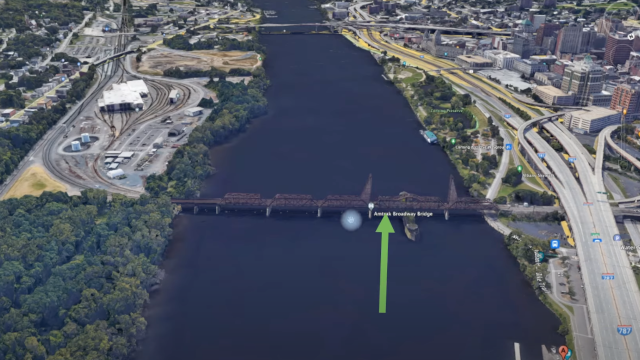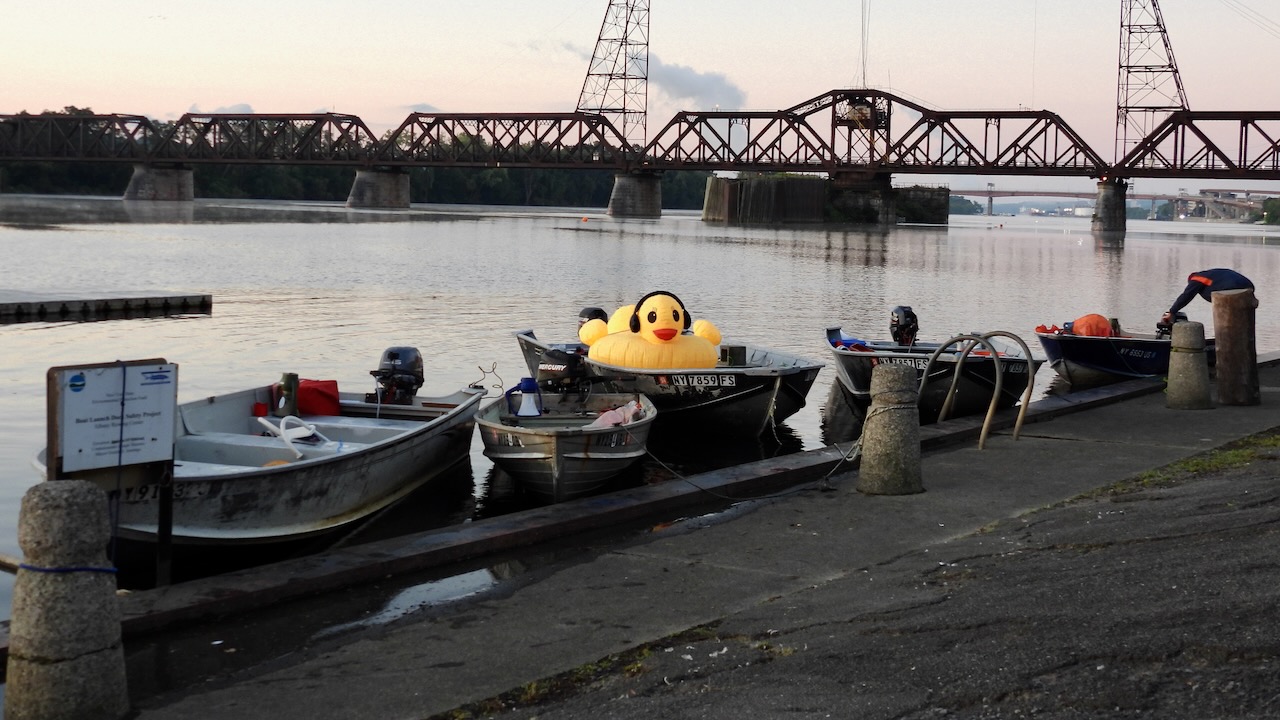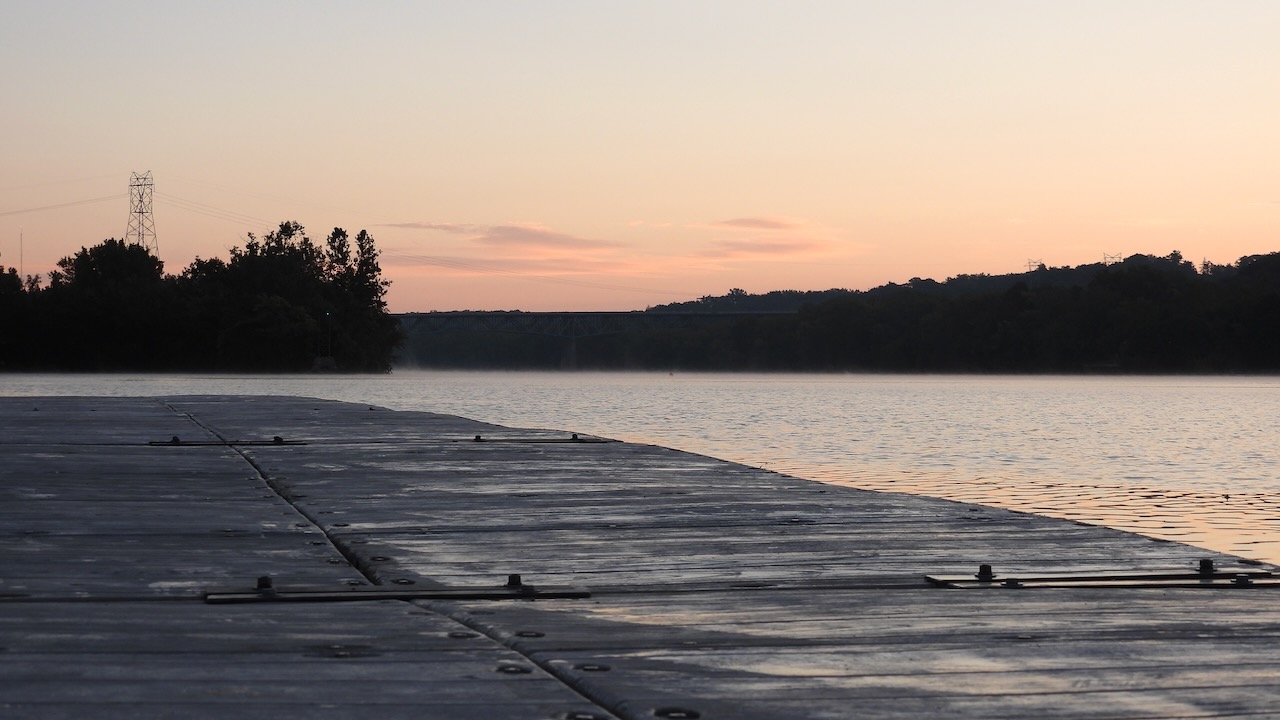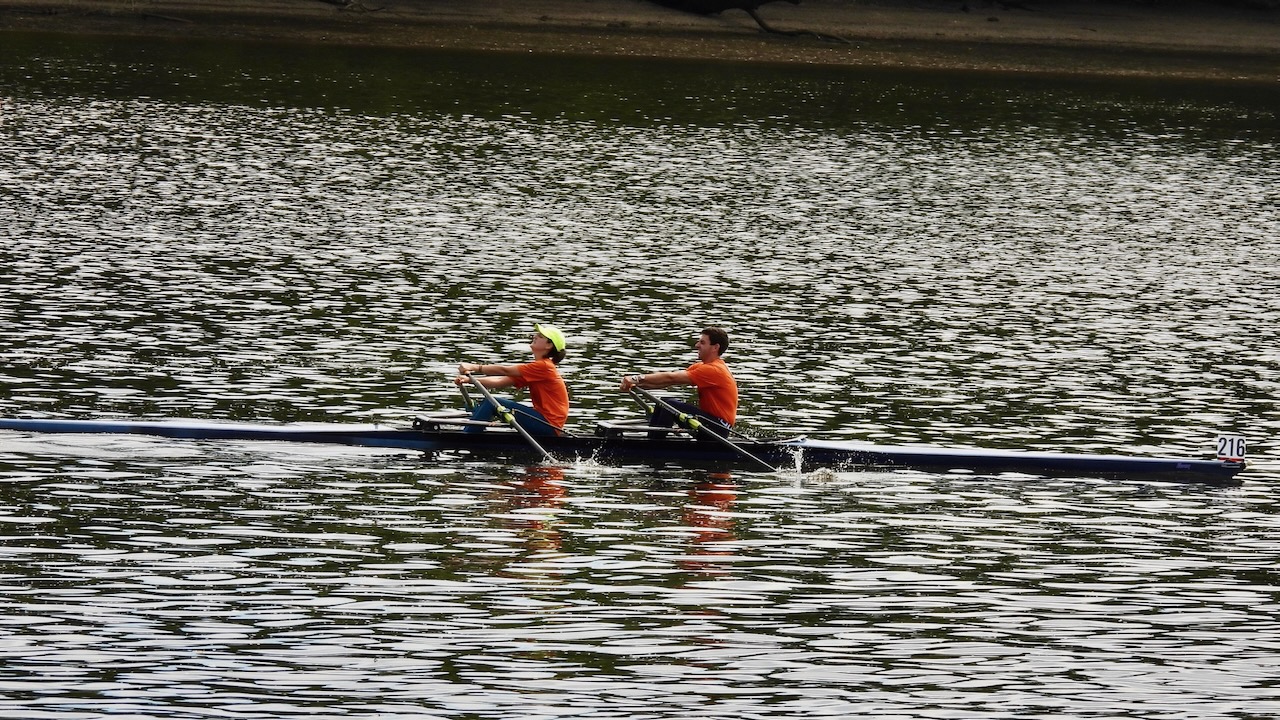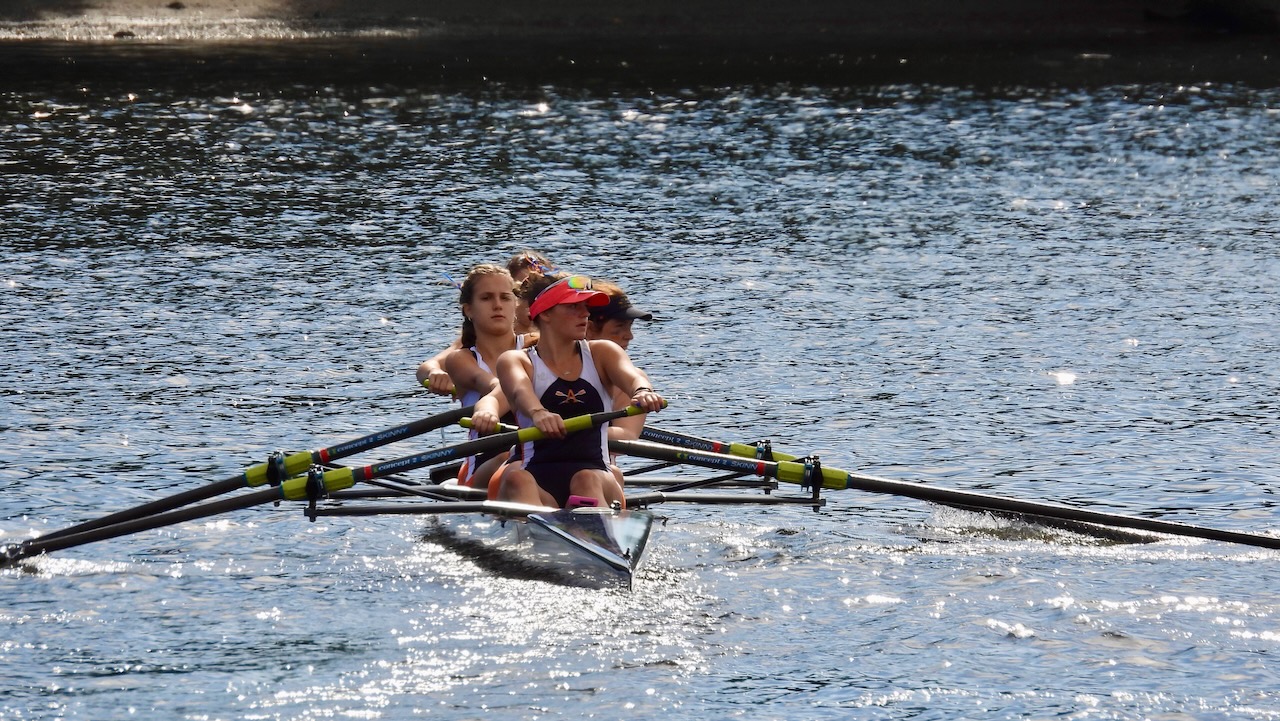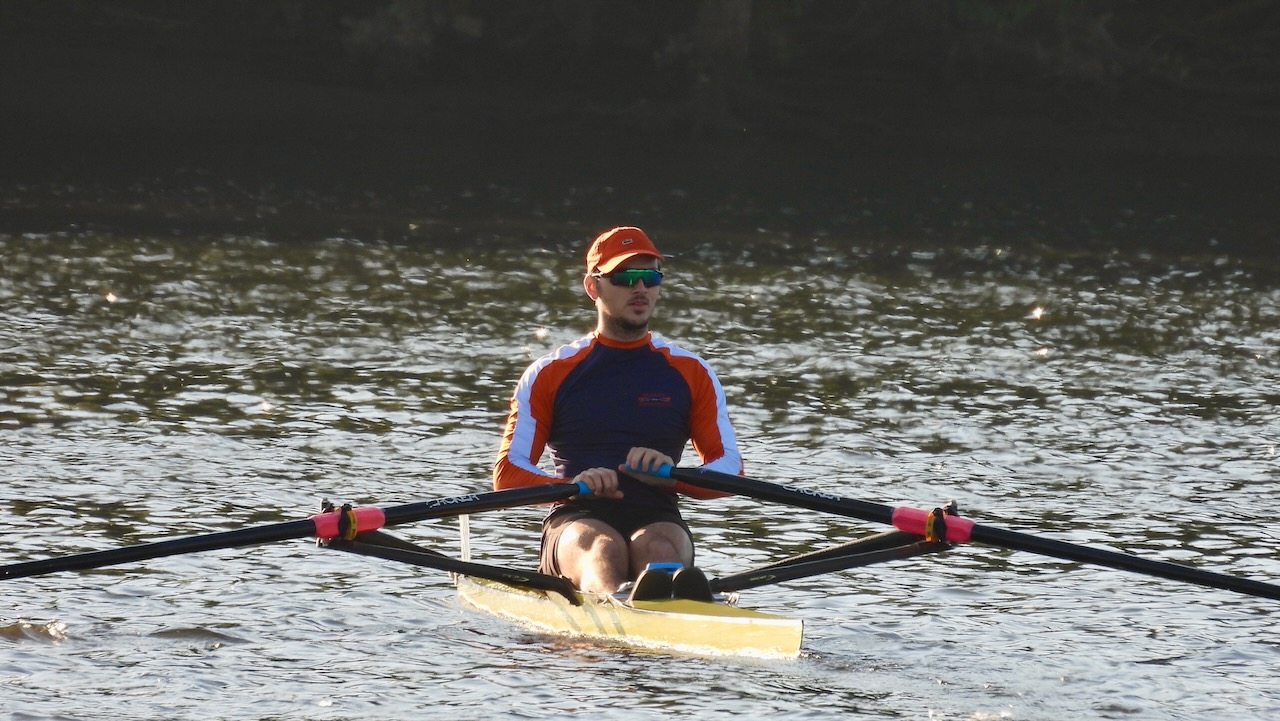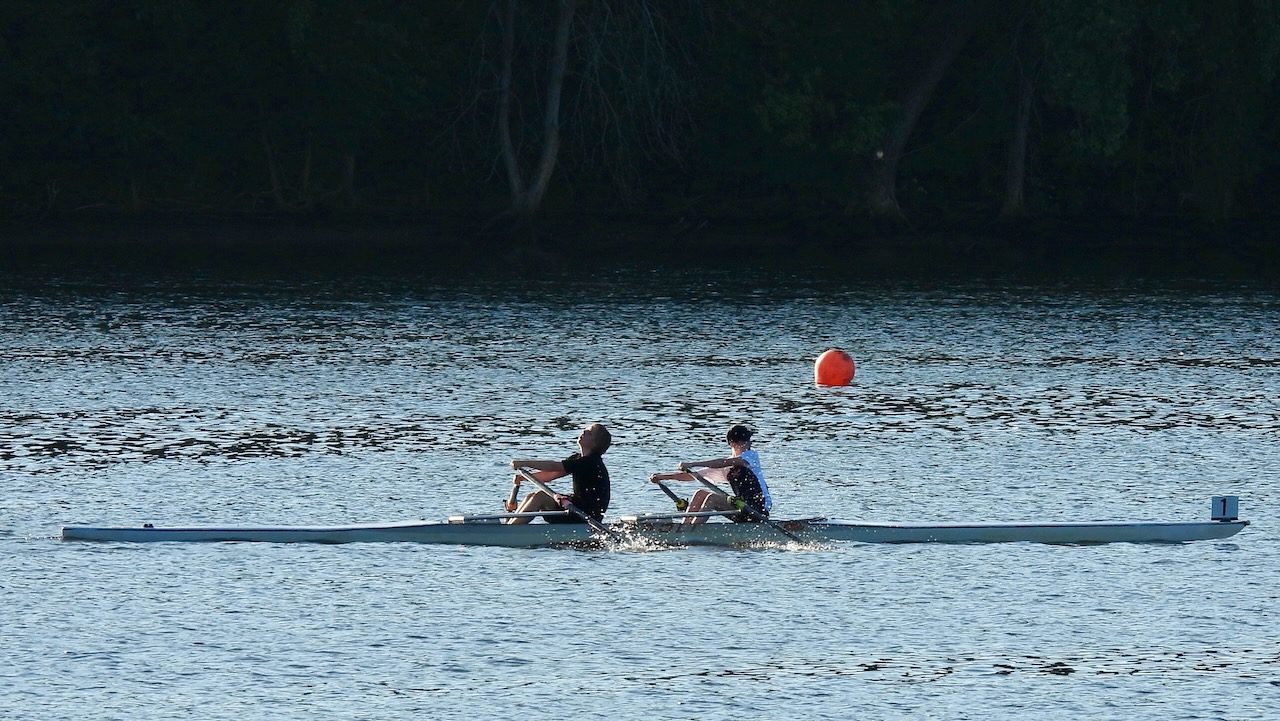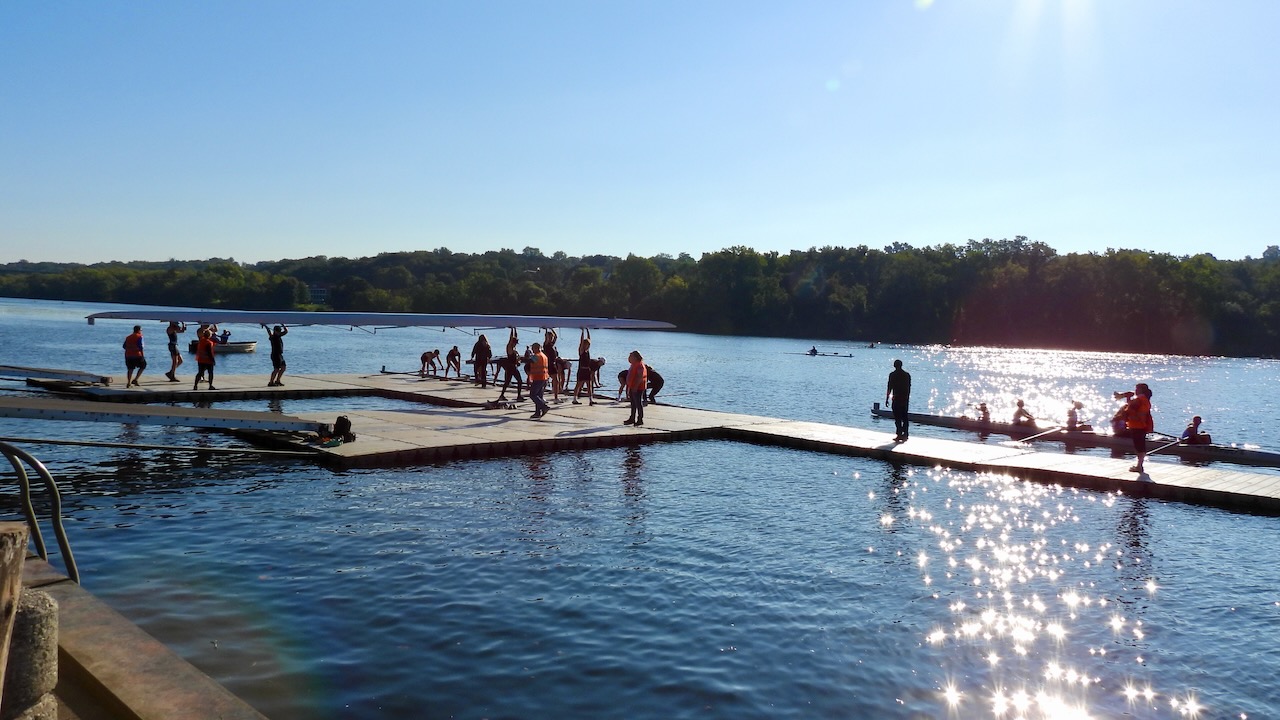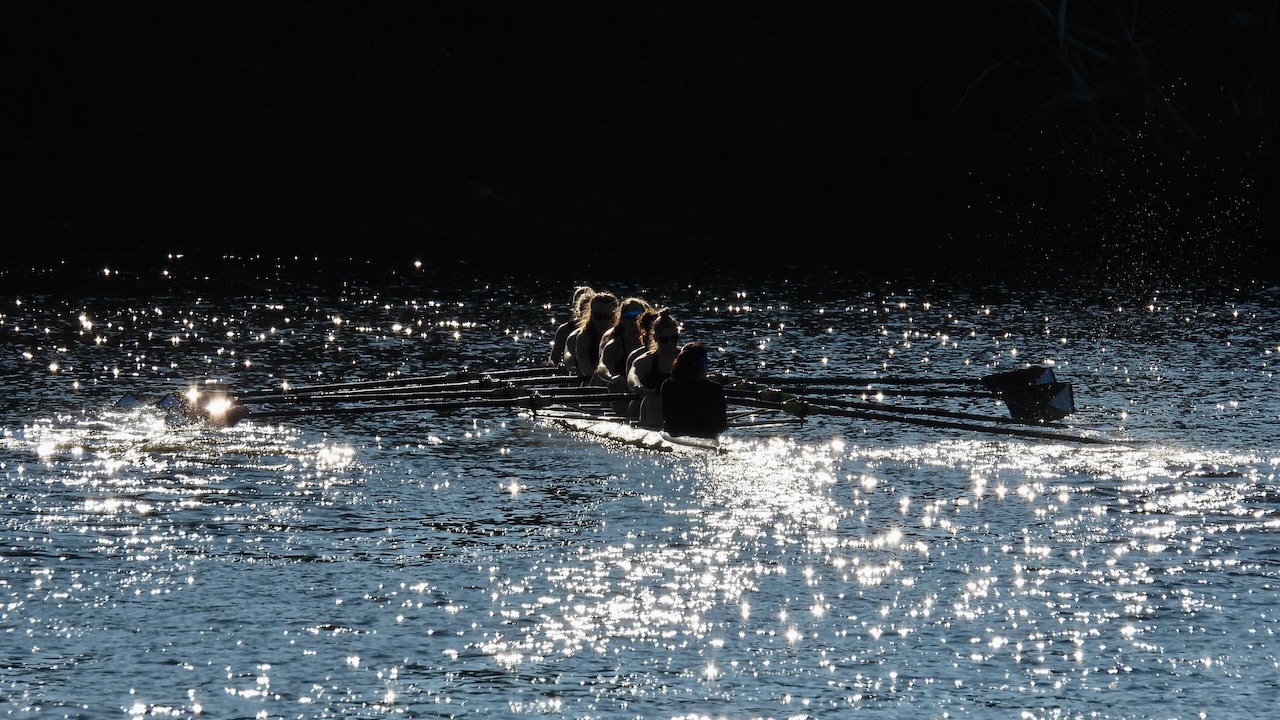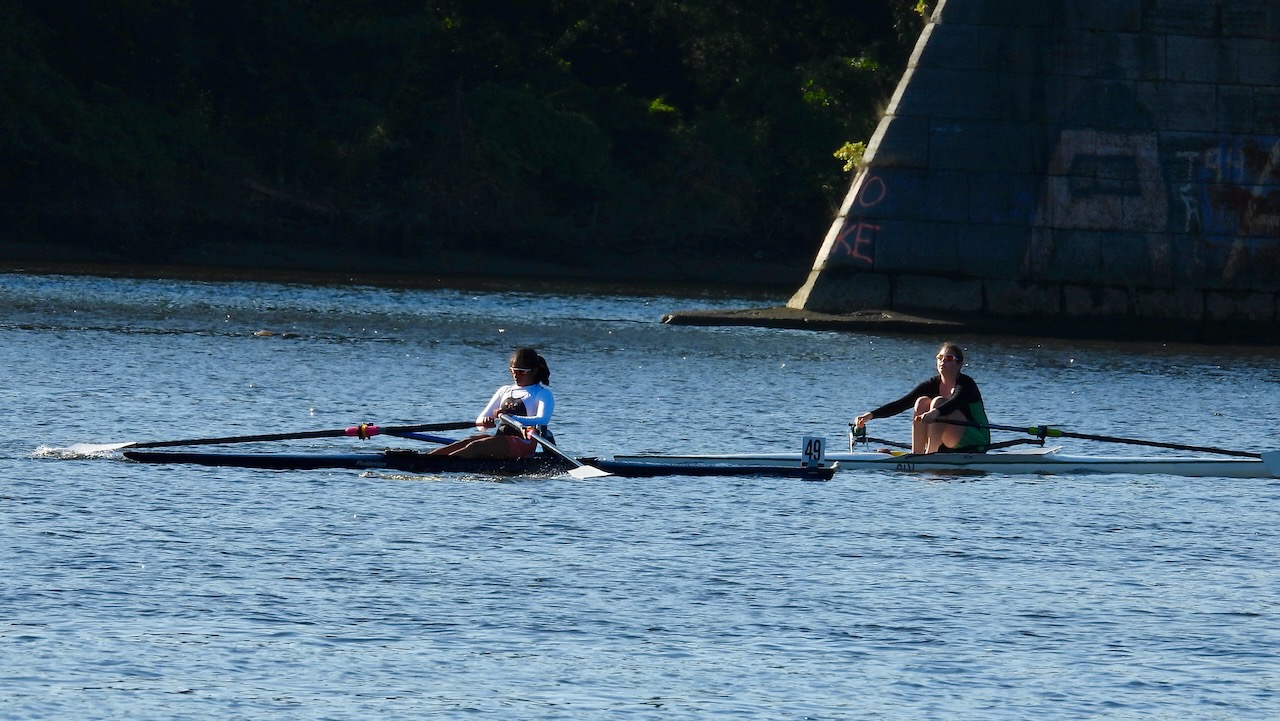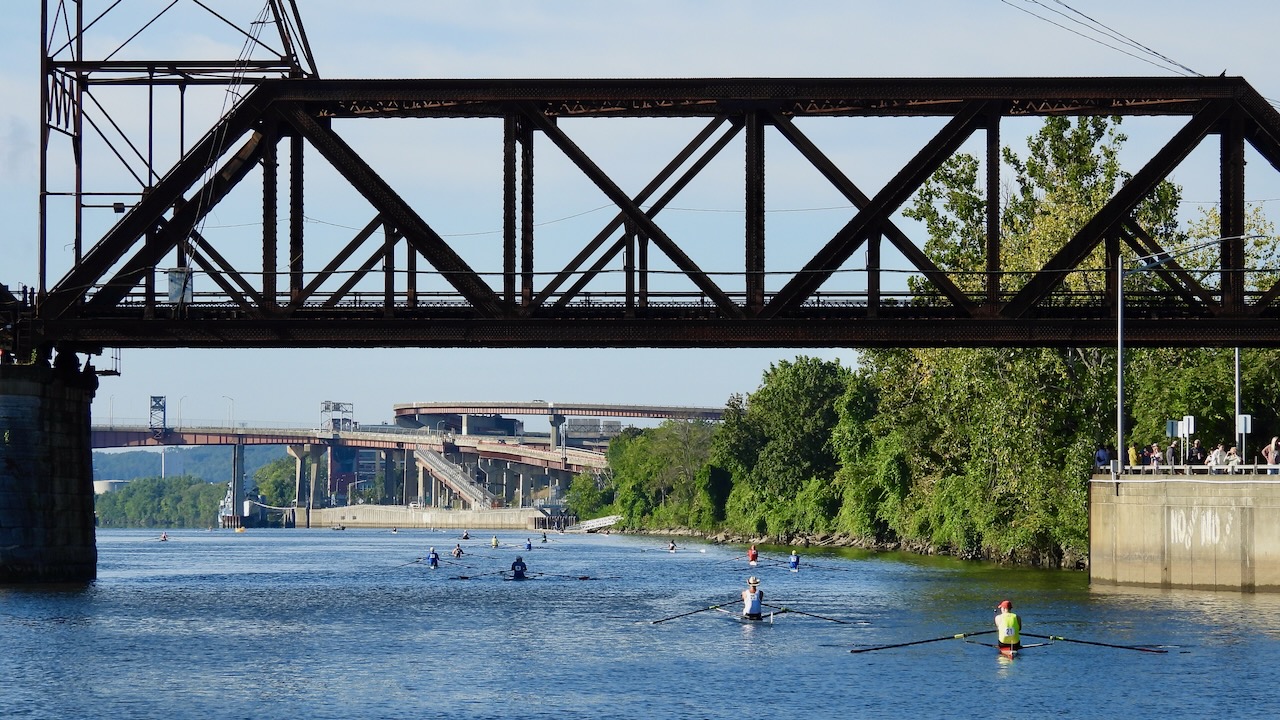Head of Hudson
The premier rowing event on the Hudson River in Albany, bringing together hundreds of competitors from high schools, colleges, and clubs from the Capital Region as well as other areas of New York and surrounding states.
- Sunday, Sept 22, 2024
- Albany Rowing Center Boathouse
- 8:00am - 1:30pm
Registation
Opens July 31 on regattacentral.com
Schedule & Results
Will be posted on rowtown.org
Location & Directions
Boathouse Location
Albany Rowing Center operates out of the City of Albany Boat Shed at the Corning Preserve Public Boat Launch. The boathouse is located under the elevated roadway of Interstate 787, north of the intersection of Colonie St. and Water St.
Driving Directions
From the North and Interstate 90
Take Interstate 787 South. From 787 South, take exit Exit 4A Colonie Street. This will put you on to Water Street. You will see the boatyard and parking lot on your left under the 787 roadway. Turn left into the parking lot.
From the South
Take Interstate 787 north to Exit 4 "Downtown Albany". Stay right and follow the service road (Quay Street) along the river following the signs for Corning Preserve and Colonie Street. Go past the parking area at the small park where the Barge restaurant is moored. As you pass under the railroad bridge, the road curves left and the parking lot is on your right.
From Dunn Memorial Bridge
Take I-787 North exit marked "Troy" on the bridge. This will put you on the service road. Stay right and follow the service road (Quay Street) along the river following the signs for Corning Preserve and Colonie Street. Go past the parking area at the small park where the Barge restaurant is moored. As you pass under the railroad bridge, the road curves left and the parking lot is on your right.
Parking Info & Maps
Click on the maps below to be redirected to the exact location on Google maps.
Regatta Site Maps
Google Map showing the location of parking, dock, finish, start, and viewing locations.

Detailed Map
Trailer parking details, vendor & spectator tents, launch dock, dropoff area.
Course Maps
Race Course Videos
Rules & Procedures
Launching Procedures
- Only crews and launching supporters are allowed on the docks.
- Dock space is very limited and we need to launch and land a lot of boats.
- Come to the dock with a plan for how to launch efficiently.
- Crews must launch 30 minutes before the start of their event.
- After launching, crews must wait for an all-clear signal from the launch before crossing the course to the travel lane.
- Once cleared to cross the course, crews should proceed to the far shore as quickly as possible and then proceed north along the eastern (Rensselaer) shore of the river.
- When traveling under the (I-90) bridge, do not use the arch closest to shore, it is shallow and hazardous.
- Otherwise keep reasonably close to the far shore and out of the buoyed race lane.
- Any crew arriving at the start after the last boat in their event has started, but before the last boat has crossed the finish, will be timed at the discretion of the officials.
- Any crew arriving at the start after the last boat in their event has crossed the finish line will not be timed.
The Race Course
- Crews should row up well past the starting line, but do not go north of the overhead power lines.
- Once in the start marshaling area, crews should try to line up in bow-number order.
- The starting-line official will be in a launch directing crews to enter the starting-chute marked with orange buoys.
- When entering the starting-chute, rowers should be at half to three-quarter power.
- The second orange buoys mark the point at which crews should be at full power so that they will be up to speed when they cross the official start line.
- Crews start the race north of the I-90 Bridge opposite the red triangle (navigation mark), proceed south back through the I-90 bridge (be aware of the abutments!) and then through the railroad bridge.
- Even though the course is relatively straight, it is deceptive near the railroad bridge.
- Bow seats and coxswains please be aware there is an adjustment to get through the correct arches to the east of the bridge island.
- The finish line is at the Corning Preserve Amphitheater.
- When approaching the finish line (large white buoy), crews should stay closer to the center of the river in the race lane to avoid collisions with crews returning to the dock along the Albany shore.
- Crews approaching the finish line must continue paddling well past the finish and around the turning buoy so as not to impede other boats that are finishing.
- Crews will be instructed by a marshal to turn upriver towards the western (Albany) shore toward the receiving docks.
Rules During The Race
- Crews may pass on either side.
- Crews being overtaken must not impede the overtaking crew.
- In other words, yield to the crew that is overtaking.
- Passing crews must stay well clear of the shell being overtaken and must maintain their lane until they are at least two boat lengths ahead.
- Passing is not allowed, nor is the crew being overtaken required to yield, in cases where the overtaking crew’s position clearly prevents safe passage or where there is insufficient room to yield.
- In other words, passing is not allowed when there is danger of colliding with a bridge.
- Overtaking crews are encouraged to communicate to the boat they are passing, which direction they would like the slower crew to yield.
- Failure to yield right of way may result in a 60 second penalty.
- Note that we cannot give anyone time back, we can only take time away as a penalty, so be careful and strategic about passing! Any boat rowing out of either the travel or race lane may be disqualified.
- Any notification of a foul or protest must be given to the finish line marshal while the crew is still on the water Any protest that is not upheld, earns a disqualification for that boat.
Return Dock Procedures
- Returning crews should row in single file up the from the finish line turning buoy, through the railroad bridge arch closest to shore, taking care to keep out of the race lane.
- Be aware there may be a back-up, as return dock space is limited.
- Eights will be retrieved on the launch dock, smaller boats will be retrieved on the return dock at the boat-ramp.
- Once on the dock, be as quick as possible to accommodate other returning crews.
About Head of Hudson
Overview
This year marks the 36th anniversary for the Head of the Hudson Regatta, with viewing possible at many points along the course. The bike path runs the entire length of the course. Competing rowers begin at a start point north of the I-90 Bridge, upstream of the Albany Rowing Center boathouse on the Hudson River and, one after the other, race south to finish at the Riverfront Amphitheater at Jennings Landing. The fastest time in each race event determines the winner. An All-Points Trophy is awarded at the end of the regatta to the team with the most points overall, based on placement in each race event.
The regatta consists of over thirty different race events, in which adults, juniors, college and adaptive rowers, both novice and experienced, compete. It is an excellent early fall regatta for rowers of all ages and experience levels. Competition will be held in all boat types: Singles, Doubles, Pairs, Quads, Fours and Eights. Spectators will be able to watch the excitement of both sculling and sweeping races.
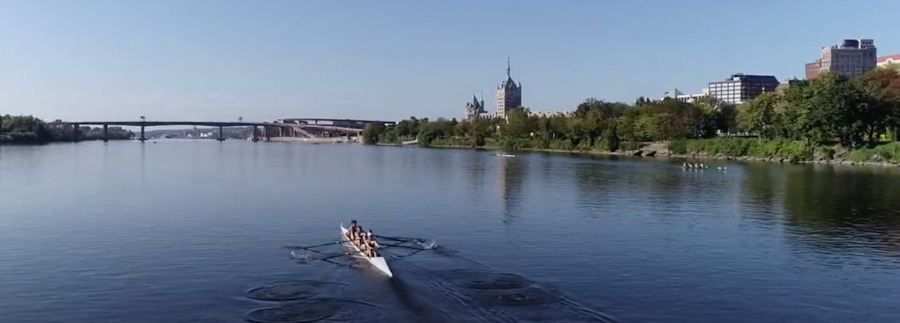
History
For many port cities at the turn of the century, rowing played an important part of recreation and entertainment.It was a sport for the common man where people would gather at the shores to cheer on their local competitors. Albany, whose history is tied to the Hudson River, is no exception. In many cities, the interest waned due to World War I and changing priorities. Yet the City of Albany had resurgence from the 1980s into the 90s while Thomas Whalen III was Mayor of Albany. He was an avid sculler and put the structure and support that inspired one of the largest east coast rowing competitions at that time – the Empire State Regatta. At its most popular, the Empire State Regatta pulled in as many as 100,000 people to the shores of the Hudson, while athletes competed for a coveted spot on the US National team. Rowing is a natural sport for the city, with its rich tradition of boating and connection with the water and the assiduity of its people and is an integral part of the identity of the Capital City.

